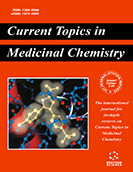Abstract
Computational drug repositioning is popular in academia and pharmaceutical industry globally. The repositioning hypotheses, generated using a variety of computational methods, can be quickly tested experimentally. Several success stories have emerged in the past decade or so. Newer concepts and methods such as drug profile matching are being tried to address the limitations of current computational repositioning methods. The trend is shifting from earlier small-scale to large-scale or global-scale repositioning applications. Other related approaches such as prediction of molecular targets for novel molecules, prediction of side-effect profiles of new molecular entities (NMEs), etc., are applied routinely. The current article focuses on state-of-the-art of computational drug repositioning field with the help of relevant examples and case studies. This ‘lateral’ approach has significant potential to bring down the time and cost of the awfully expensive drug discovery research and clinical development. The persistence and perseverance in the successful application of these methods is likely to be paid off in near future.
Keywords: Drug repositioning, Inverse virtual screening, Drug profile matching, Reverse docking, PharmMapper, Systems biology.
Graphical Abstract
Current Topics in Medicinal Chemistry
Title:Computational Drug Repositioning: A Lateral Approach to Traditional Drug Discovery?
Volume: 16 Issue: 19
Author(s): Niteshkumar U. Sahu and Prashant S. Kharkar
Affiliation:
Keywords: Drug repositioning, Inverse virtual screening, Drug profile matching, Reverse docking, PharmMapper, Systems biology.
Abstract: Computational drug repositioning is popular in academia and pharmaceutical industry globally. The repositioning hypotheses, generated using a variety of computational methods, can be quickly tested experimentally. Several success stories have emerged in the past decade or so. Newer concepts and methods such as drug profile matching are being tried to address the limitations of current computational repositioning methods. The trend is shifting from earlier small-scale to large-scale or global-scale repositioning applications. Other related approaches such as prediction of molecular targets for novel molecules, prediction of side-effect profiles of new molecular entities (NMEs), etc., are applied routinely. The current article focuses on state-of-the-art of computational drug repositioning field with the help of relevant examples and case studies. This ‘lateral’ approach has significant potential to bring down the time and cost of the awfully expensive drug discovery research and clinical development. The persistence and perseverance in the successful application of these methods is likely to be paid off in near future.
Export Options
About this article
Cite this article as:
U. Sahu Niteshkumar and S. Kharkar Prashant, Computational Drug Repositioning: A Lateral Approach to Traditional Drug Discovery?, Current Topics in Medicinal Chemistry 2016; 16 (19) . https://dx.doi.org/10.2174/1568026616666160216153249
| DOI https://dx.doi.org/10.2174/1568026616666160216153249 |
Print ISSN 1568-0266 |
| Publisher Name Bentham Science Publisher |
Online ISSN 1873-4294 |
 76
76 5
5 1
1 1
1
- Author Guidelines
- Bentham Author Support Services (BASS)
- Graphical Abstracts
- Fabricating and Stating False Information
- Research Misconduct
- Post Publication Discussions and Corrections
- Publishing Ethics and Rectitude
- Increase Visibility of Your Article
- Archiving Policies
- Peer Review Workflow
- Order Your Article Before Print
- Promote Your Article
- Manuscript Transfer Facility
- Editorial Policies
- Allegations from Whistleblowers
- Announcements
Related Articles
-
Assessing Drug Transport Across the Human Placental Barrier: From In Vivo and In Vitro Measurements to the Ex Vivo Perfusion Method and In silico Techniques
Current Pharmaceutical Biotechnology Minocycline and Doxycycline: More Than Antibiotics
Current Molecular Pharmacology The GABAA-BZR Complex as Target for the Development of Anxiolytic Drugs
Current Topics in Medicinal Chemistry Targeting Neuronal Nicotinic Receptors in Cancer: New Ligands and Potential Side-Effects
Recent Patents on Anti-Cancer Drug Discovery From A1 to A3 en passant Through A2A Receptors in the Hippocampus: Pharmacological Implications
CNS & Neurological Disorders - Drug Targets Selective Agonists and Antagonists for Kainate Receptors
Mini-Reviews in Medicinal Chemistry Near Infrared Optical Technologies to Illuminate the Status of the Neonatal Brain
Current Pediatric Reviews fMRI Simulator Training to Suppress Head Motion
Neuroscience and Biomedical Engineering (Discontinued) Polypharmacological Properties and Therapeutic Potential of β-Caryophyllene: A Dietary Phytocannabinoid of Pharmaceutical Promise
Current Pharmaceutical Design Diagnostic Properties and Significance of Tongue in Persian Medicine and Chinese Medicine
Current Traditional Medicine Can Nutrition Play a Role as a Stimulant for COVID 19 in Children?
Reviews on Recent Clinical Trials Rational Drug Design and the Discovery of the Δ2-1,2,3-Triazolines, A Unique Class of Anticonvulsant and Antiischemic Agents
Current Medicinal Chemistry Lafora Progressive Myoclonus Epilepsy: Recent Insights into Cell Degeneration
Recent Patents on Endocrine, Metabolic & Immune Drug Discovery (Discontinued) The Role of Innate Immune System Receptors in Epilepsy Research
CNS & Neurological Disorders - Drug Targets The Validity of Mobile Applications to Facilitate Patient Care Provided to Cancer Patients: Opportunities and Limitations
Recent Patents on Anti-Cancer Drug Discovery Signaling Pathways that Regulate Basal ABC Transporter Activity at the Blood- Brain Barrier
Current Pharmaceutical Design The Hypothalamus and Obesity
Recent Patents on CNS Drug Discovery (Discontinued) Search for Distinctive Markers in DNT and Cortical Grade II Glioma in Children: Same Clinicopathological and Molecular Entities?
Current Topics in Medicinal Chemistry p75NTR as a Therapeutic Target for Neuropsychiatric Diseases
Current Molecular Pharmacology Psychopharmacological Treatment of Obsessive-Compulsive Disorder (OCD)
Current Neuropharmacology


























